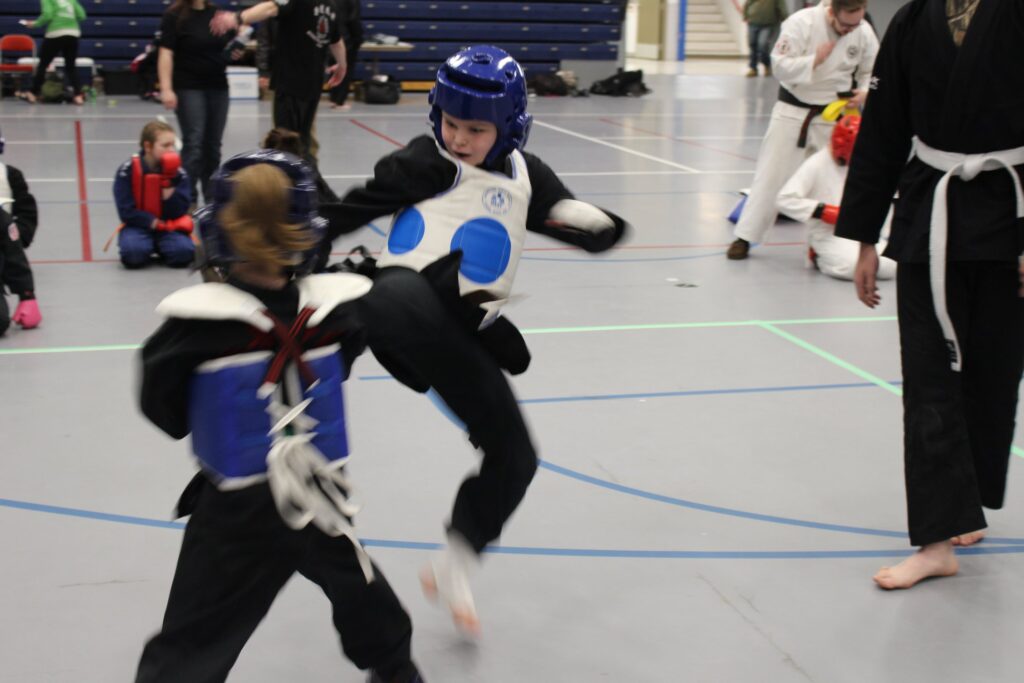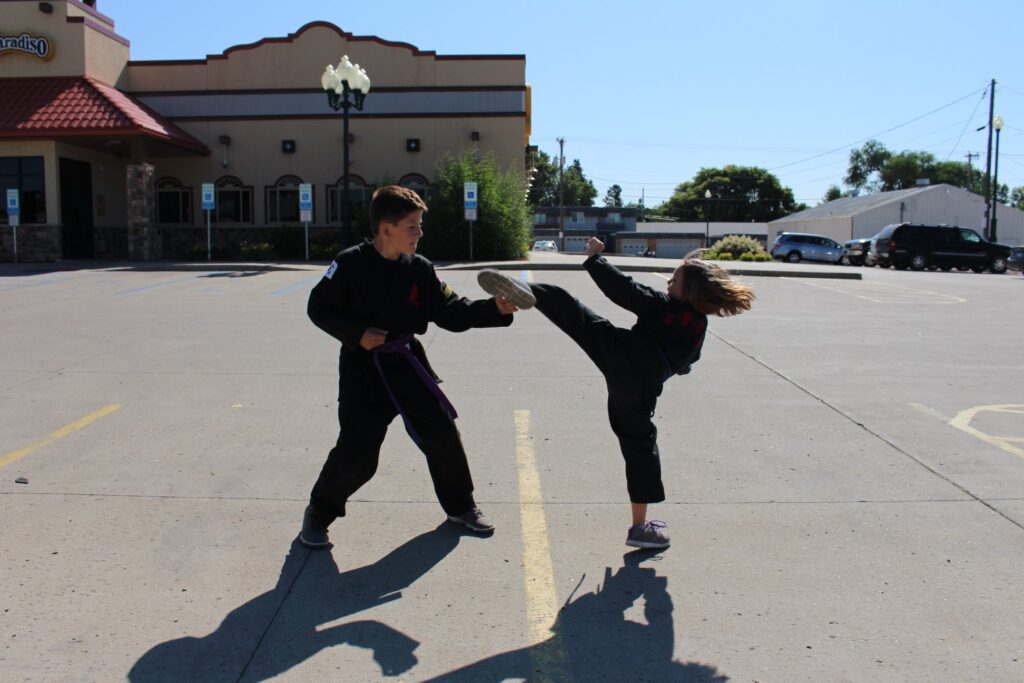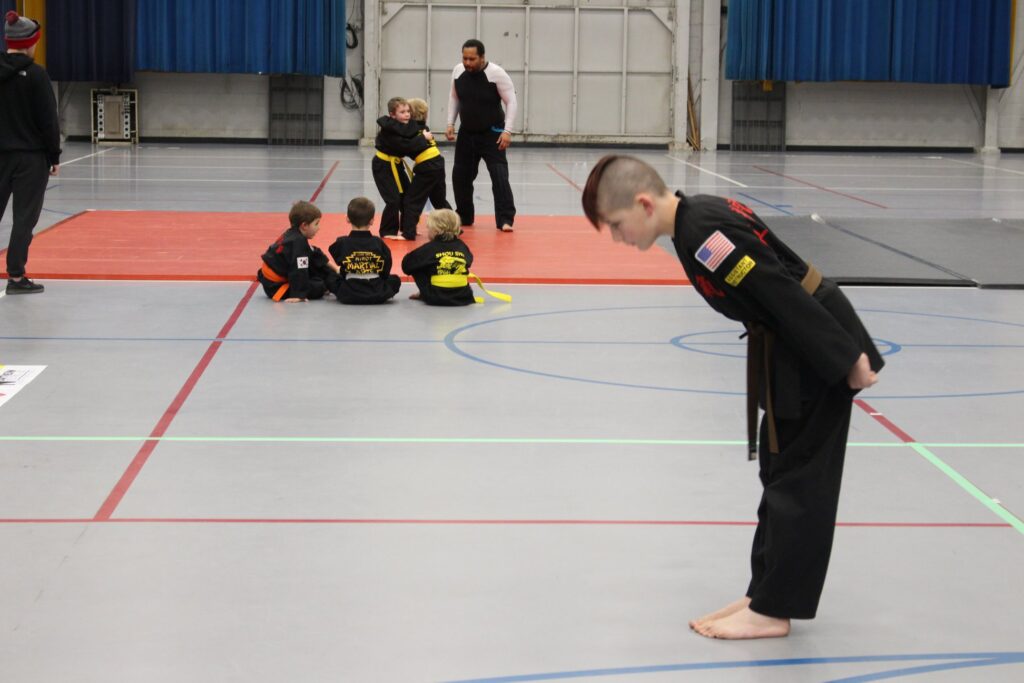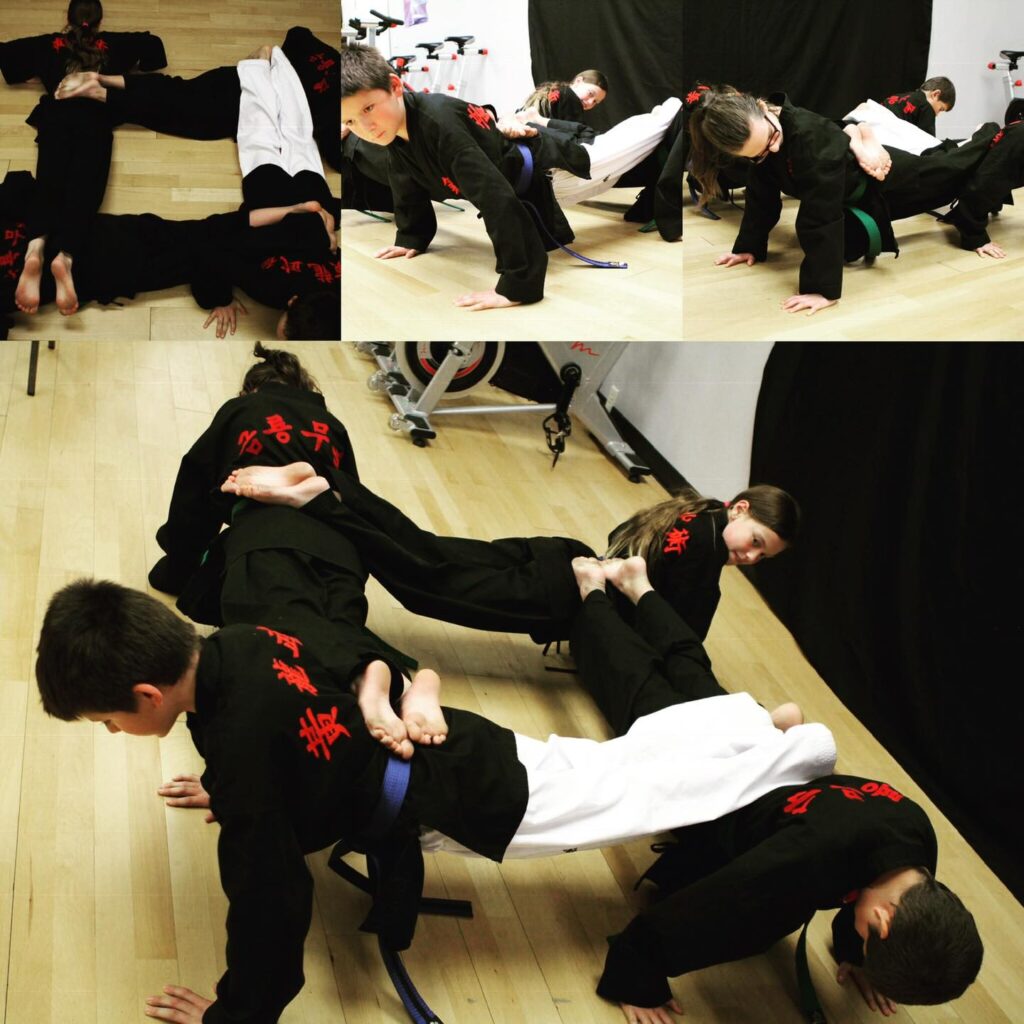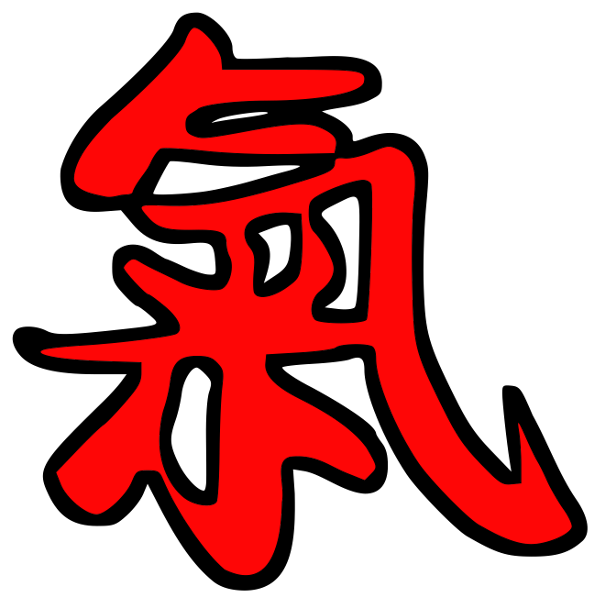Martial arts, with their rich history and diverse techniques, have captivated individuals around the globe for centuries. At our esteemed academy, we delve into the essence of martial arts by placing emphasis on four core disciplines: Hapkido, Taekwondo, Gung Fu, and Pencak Silat. Each of these disciplines brings its own unique blend of tradition, philosophy, and physical prowess to our training, offering students a holistic and comprehensive martial arts experience.
Hapkido: The Art of Harmony and Unity
Hapkido, a Korean martial art, is often referred to as the “art of coordinated power.” Rooted in the principles of circular motion and the water concept, Hapkido focuses on redirecting an opponent’s force, using their energy against them. Practitioners of Hapkido develop a keen sense of balance, joint locks, throws, and strikes, fostering a dynamic and adaptable approach to self-defense. The philosophy of Hapkido emphasizes harmony and unity, promoting a balanced integration of mind, body, and spirit.
Taekwondo: The Way of the Foot and Fist
Originating in Korea, Taekwondo is renowned for its powerful kicks, dynamic strikes, and disciplined forms. With an emphasis on both physical and mental conditioning, Taekwondo instills qualities such as respect, perseverance, and self-control in its practitioners. The art is not merely about mastering techniques but also about cultivating a strong spirit and indomitable will. At our academy, Taekwondo becomes a journey of self-discovery and personal growth.
Gung Fu: Unleashing the Power of Effortless Mastery
Gung Fu, often known as Kung Fu, is a collective term for traditional Chinese martial arts. Embracing a diverse range of styles, Gung Fu is a tapestry of movements, strikes, and philosophies. It places a strong emphasis on the development of internal energy, flowing movements, and adaptability in combat. Gung Fu practitioners learn to blend strength with flexibility, turning the body into a seamless expression of power and grace. Beyond physical prowess, Gung Fu is a path to spiritual enlightenment and self-realization.
Pencak Silat: The Art of Indonesian Martial Heritage
Hailing from the Indonesian archipelago, Pencak Silat is a comprehensive martial art that encompasses strikes, throws, joint locks, and weaponry. Rooted in cultural traditions, Pencak Silat is not just a system of combat but a way of life. The art emphasizes fluidity, rhythm, and the integration of mind and body. Practitioners of Pencak Silat gain a deep understanding of their surroundings, developing heightened situational awareness and an acute sense of timing.
At our academy, these core disciplines are not merely taught as separate entities but are interwoven to provide a well-rounded martial arts education. Students have the opportunity to explore the unique strengths of each discipline while discovering the common threads that connect them. Through dedicated practice, our aim is to guide individuals on a transformative journey, fostering not only physical prowess but also mental resilience, discipline, and a deep appreciation for the profound philosophy that underlies each martial art. The study of Hapkido, Taekwondo, Gung Fu, and Pencak Silat is an invitation to embark on a path of self-discovery, where the martial artist becomes not just a practitioner of techniques but a steward of tradition, culture, and personal growth.
HAP KI DO
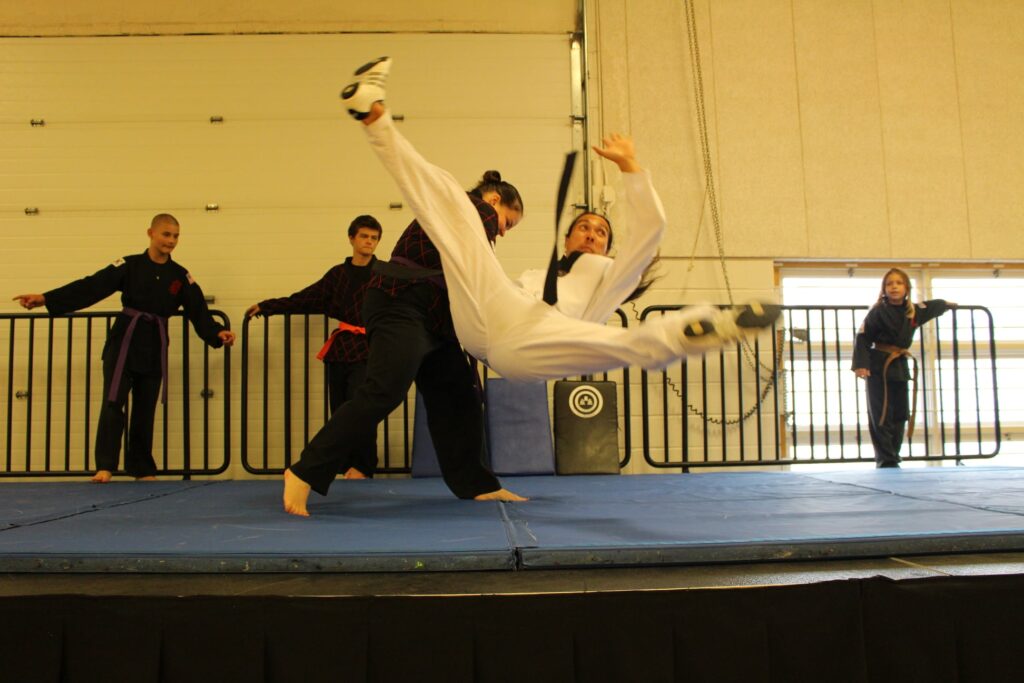
Hapkido: The Art of Harmony and Power
In the diverse landscape of martial arts, Hapkido stands out as a dynamic and comprehensive discipline that seamlessly blends self-defense techniques, fluid movements, and philosophical principles. Rooted in ancient Korean martial traditions, Hapkido has evolved into a sophisticated system that emphasizes both the physical and spiritual aspects of personal development. This one-page introduction seeks to unravel the essence of Hapkido, shedding light on its rich history, core principles, and unique characteristics that make it a captivating martial art.
Historical Roots:
Hapkido traces its roots back to the tumultuous history of Korea, where warriors sought effective and versatile combat techniques. Emerging in the mid-20th century, Hapkido synthesizes elements from traditional Korean martial arts, such as Taekkyeon and Hwa Rang Do, as well as influences from Japanese martial arts, including Aikido and Jujutsu. The founder, Choi Yong-Sool, developed Hapkido as a response to the need for a well-rounded self-defense system that could adapt to various situations.
Philosophical Foundation:
At its core, Hapkido embodies the philosophy of harmony and non-resistance. Practitioners are taught to redirect an opponent’s energy, turning their aggression into a disadvantage. The principle of “Hwa,” meaning harmony, underscores the art’s emphasis on adapting to the opponent’s movements and intentions, promoting a balanced and flowing interaction. The concept of “Um” or softness further complements this philosophy, encouraging the adept to yield and blend rather than confront with brute force.
Dynamic Techniques:
Hapkido’s diverse range of techniques includes joint locks, throws, strikes, break falls and kicks. What sets Hapkido apart is its emphasis on circular motions and fluid transitions between offensive and defensive maneuvers. Practitioners learn to use an opponent’s force against them, employing joint manipulation and leverage to neutralize threats effectively. The art’s versatility allows practitioners to defend against armed and unarmed assailants, making it a practical and adaptable self-defense system.
Holistic Training:
Beyond physical techniques, Hapkido places a strong emphasis on mental and spiritual development. Practitioners cultivate discipline, focus, and resilience through rigorous training. Meditation and breath control are integral components, fostering a deep connection between mind and body. This holistic approach not only enhances self-defense capabilities but also contributes to personal growth and well-being.
Community and Global Impact:
Hapkido has transcended its Korean origins to become a global martial art, with schools and practitioners spanning continents. Its inclusive philosophy and practical applications have contributed to its widespread popularity. Hapkido dojangs (training halls) serve as vibrant communities where individuals from diverse backgrounds come together to learn, share, and grow the art.
In conclusion, Hapkido stands as a testament to the enduring legacy of martial arts, blending tradition with innovation. As practitioners navigate the intricate techniques and absorb the profound philosophy of Hapkido, they embark on a journey of self-discovery, harmony, and empowerment.
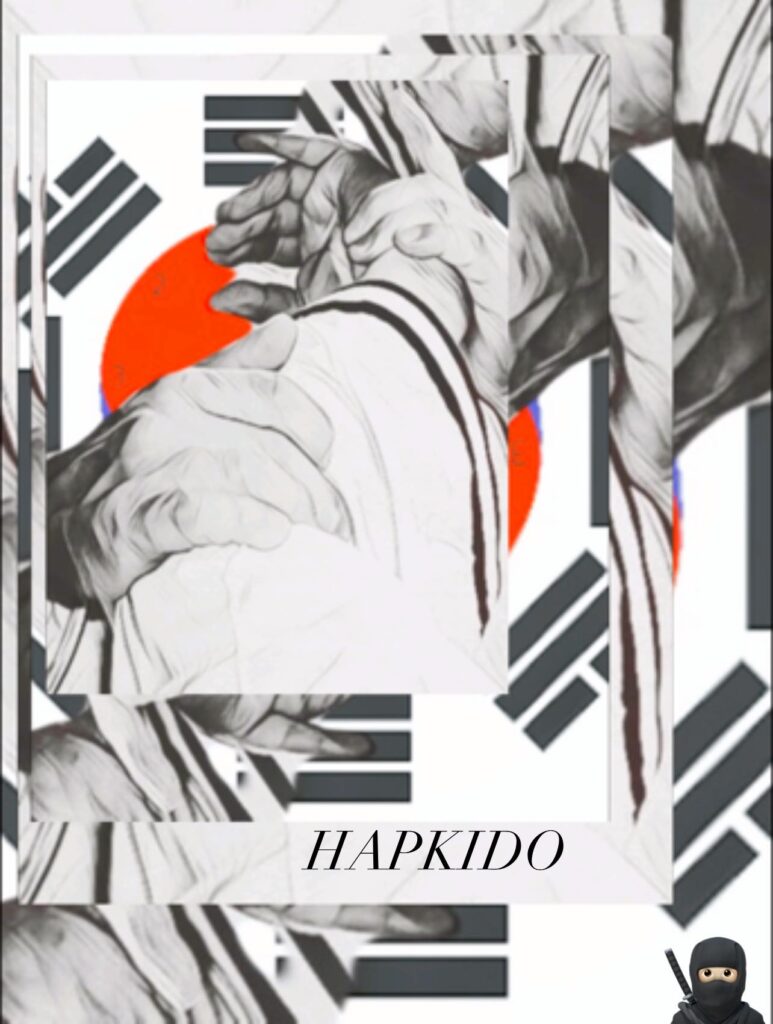
TAE KWON DO
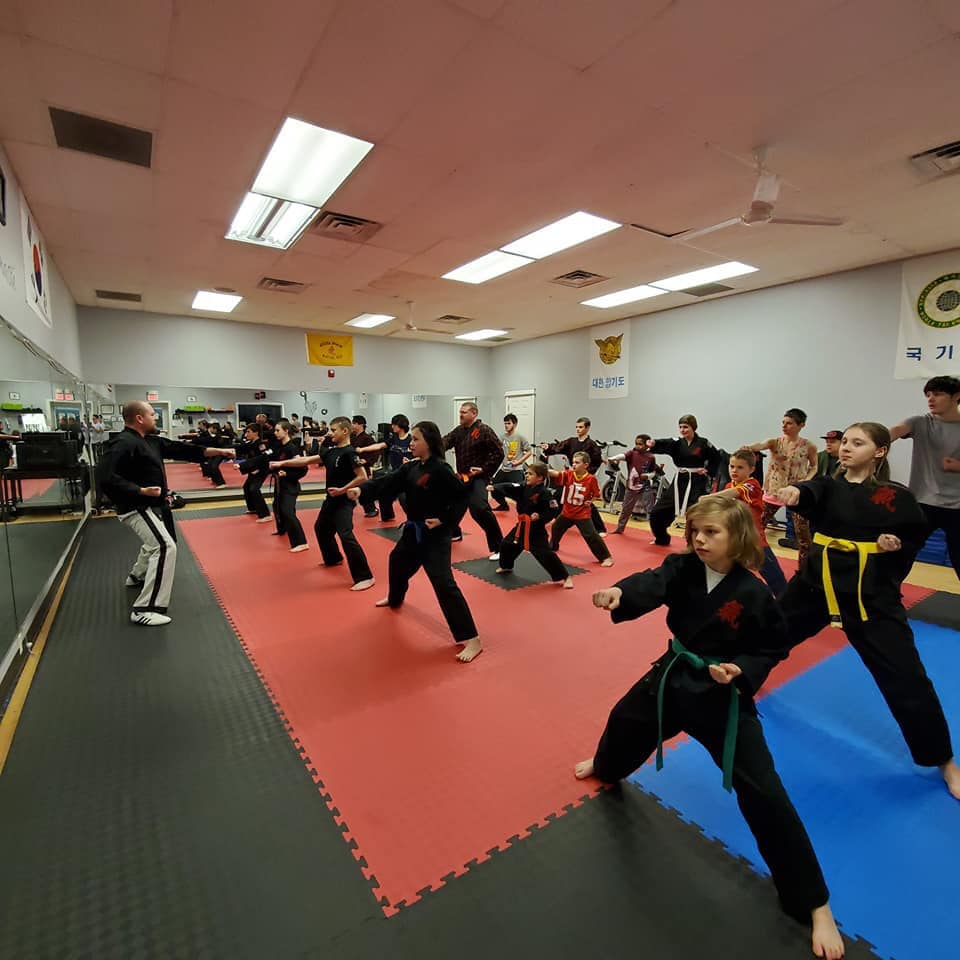
Golden Dragon Taekwondo stands as a beacon of tradition, discipline, and empowerment. Rooted in the ancient Korean martial arts, this foundation transcends the physical aspects of combat, delving into a holistic approach to personal development and self-discovery.
At the heart of Golden Dragon Taekwondo is a commitment to fostering not just skilled martial artists, but well-rounded individuals equipped with a strong sense of character and unwavering confidence. The foundation’s philosophy is deeply ingrained in the five tenets of Taekwondo: courtesy, integrity, perseverance, self-control, and indomitable spirit. These principles form the bedrock of the art, shaping not only formidable fighters but also nurturing respectful, responsible, and resilient individuals.
Founded by Grandmaster Sun Lee, a venerable figure in the world of Taekwondo, Golden Dragon Taekwondo Foundation has a rich lineage that traces its roots to the ancient Korean martial arts traditions. Grandmaster Lee’s vision goes beyond the confines of a training facility; it extends to building a community that embraces diversity and inclusivity, where practitioners of all ages and backgrounds find a common ground for personal growth.
The curriculum at Golden Dragon Taekwondo seamlessly blends the ancient techniques of Taekwondo with modern teaching methodologies. From the fundamental kicks and strikes to intricate forms (poomsae) and sparring techniques, every aspect is meticulously designed to not only enhance physical prowess but also instill mental fortitude. Students progress through a structured belt system, each level serving as a milestone in their journey towards mastery.
The foundation places a strong emphasis on character development, encouraging students to apply the principles learned in the dojang (training hall) to their everyday lives. Whether in the pursuit of academic excellence, professional success, or personal relationships, the values instilled at Golden Dragon Taekwondo become a guiding compass, shaping practitioners into leaders within and beyond the martial arts community.
What sets Golden Dragon Taekwondo apart is its unwavering commitment to community service and social responsibility. The foundation actively engages in outreach programs, promoting the values of discipline, respect, and compassion in the wider society. Through seminars, workshops, and partnerships with local organizations, Golden Dragon Taekwondo seeks to extend the benefits of martial arts to the broader community, fostering a culture of mutual respect and understanding.
In essence, Golden Dragon Taekwondo Foundation is not merely an institution for martial arts training; it is a sanctuary for personal transformation. As individuals step onto the dojang floor, they embark on a journey that transcends physical fitness, cultivating a mindset that empowers them to face life’s challenges with resilience, grace, and an indomitable spirit. The golden dragon, symbolizing strength, wisdom, and nobility, becomes not just a logo but a living embodiment of the values imparted within the walls of Golden Dragon Taekwondo
